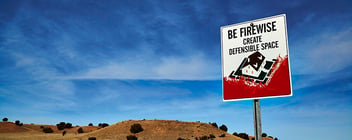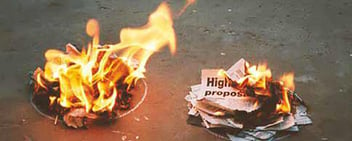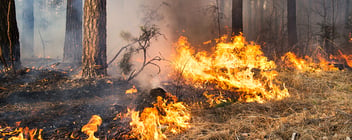Importance of Slope of land and Bushfire Protection

As we approach the fire danger season, Guest Writer, Rob Janssen, helps us understand fire danger ratings and how they can save lives!
Are you Bushfire Ready?

Why is slope of land so important when planning for bushfire protection?
Analysis of slope
The analysis of slope is an important consideration when planning for bushfire protection because of the relationship between slope and fire intensity. This is why the methods used by councils and state governments to prepare bushfire hazard overlays and for calculating radiant heat flux under the Australian Standard for the Construction of Buildings in Bushfire Prone Areas (AS3959-2009) include the analysis of slope.
Slope will cause an increase in fire intensity if burning uphill and decrease in fire intensity if burning down a hill. The angle of the slope will determine the rate of speed and intensity of the fire. As a rule, for each 10 degrees of uphill slope the fire will double in rate of spread and intensity. Similarly, for downhill slopes, for every 10 degrees of negative slope the rate of spread and intensity will halve.
Building sites located on the top of a steep slope should be avoided because they could be subject to increased fire intensity from a fire burning uphill.
Why does a fire burn more rapidly uphill?
But why does a fire burn more rapidly and intensely uphill than on flat land or downhill?
The reason is faster pre-heating of fuel and convection. When a fire burns uphill flames are closer to the fuel on the uphill side and the fuel receives more radiant heat. As a result, there is more pre-heating of the fuel which results in faster ignition. Heated air also rises up the slope which increases up-draft and further increases the rate of spread and intensity of the fire. This results in more convective heat reaching the fuel in front of the fire which again pre-heats the fuel more quickly to ignition temperature.
Slope can be described in degrees or as percent slope. AS 3959-2009 uses degrees while the bushfire overlay codes of many councils use percent slope. We have noticed that the nomenclature for slope is often interchanged so please be careful as mixing degrees with percent could lead to incorrect results, for example 6 degrees of slope is equivalent to 10.5 percent slope.
If you need help designing or constructing a home to bushfire protection levels, preparing a bushfire survival plan or want to learn more about how to defend your property in fire, visits Rob's website now or contact him via email - Rob Janssen at rjanssen@landeconsultants.com.au




